|
Her face has changed. Her moods are dark in the morning. The distance between here and there grows, or perhaps only becomes more apparent. This is the first time I’ve cried. I don’t cry in front of her. She fell in the yard today. I found her sitting on the ground, the dog whining, the 7-pound dog trying to encourage her to stand up and go home.
The television is on all the time. It takes over the room. I say, “Let’s go to the Musical Instrument Museum. You love the Musical Instrument Museum.” But she doesn’t know what or where that is. “No museums,” she says. “How about a movie?” “A movie is good,” she says. “Movies take care of themselves.” So it’s the interaction that’s gone away, the ability to interact with what we so cavalierly call reality. Instead, there are unfinished sentences, a group of words that trail off as the idea behind their formation disappears. This process of dementia is rooted in disappearance. Ghosts. She makes her way to the kitchen in the middle of the night to eat ice cream or cookies. She has always done this, this unconscious eating (and in the morning has no memory of it). A pile of crumbs. An ice cream container in the bathroom wastebasket. I call it ghost eating. She is feeding her own ghost, the lost part of her, the part that never reconciled her birth with her life; the part that has tried to become someone, is still longing for embodiment as the mind disappears. Though I know better, this appetite for embodiment lifts my heart. In the car alone I cry and pound the steering wheel. I’ve been caught in the hole in Crystal rapid with the same feeling of unreality. But at least in the hole there was something to do: get out of the hole. Here, there is nothing. Nothing to do, nothing to say. No museums. Maybe a movie. Always the television. I give her a Christmas card from a friend. “Read it to me,” she says. My heart drops. Is it that she can no longer make out words on a page? She carries books around like a kid though I know they are only a comfort. For months, she hasn’t really been able to follow what’s inside them. She keeps a book open on her lap, or used to. Now it’s just the roaring television spitting colors and opinions and busyness out into the room. Early in the morning, before she gets up, I stand in that room and soak in the quiet. What is lost? I say those words aloud and cry. What is lost?
10 Comments
It’s the usual morning thing with my housemate. Out she comes, hair disheveled, saying nothing to me, making a beeline towards breakfast. She eats quickly, head down, then a sip of water—no coffee for this one—and off she goes again to her ground-floor digs. Dinner’s much the same, though at that point in the day her hair’s organized itself. (Such beautiful hair, the color of ginger and chocolate.)
We met, my housemate and I, last winter, just as the weather began to turn cold. I could hear her knocking around down below. No parties, no big commotion, but every so often a thump or a bang that let me know she was home. She is attractive, I must admit. She is also genuinely unaware of her comeliness and this makes her all the more attractive. Unlike most people I know, I find it difficult to live in the presence of those I find attractive. Their loveliness can burn my eyes. But this one. This one proves the exception. As she crosses before me on her way to her morning bowl of delicious whatever-it-is, or runs off across the yard to her next engagement, I am simply able to admire her, her natural athleticism, her flowing hair and green eyes, her sense of independence. I don’t feel awkward or tongue-tied, though we seem to have very little to say to one another. And when I do find language necessary, I don’t stumble or stutter. I’m comfortable with her. What a good and grownup feeling that is, to be comfortable with those with whom we would like to be close. She hasn’t yet let me come close. Not too close. When I was an amateur in relationship, that was always the draw. The ones I had to chase were the ones I wanted most. A terrible model for intimacy. I don’t recommend it. But just the other day I mentioned to her that I had some good qualities and she should take note. We’d arrived at a little tangle and I thought it useful to the situation to mention my patience, fortitude, and the fact that I owned the house in which we resided. Her response was the usual. She is the mistress of understatement. But something must have gotten through to her because she seems calmer, less fearful. She no longer hurries through her breakfast, and sometimes we spend time outside in the yard together. I happened to notice she’s without a proper bed, and though I have an extra one in the garage, she continues to refuse it. So not all is “Yes ma’am and thank you.” There’s still plenty of that fierce independence. But I think I’ve learned to let go a little and she’s learned to lean in. This is what can happen when a stray cat takes up residence under your house. The summer after high school I found myself in the backseat of a Rambler station wagon, headed to South Dakota. Destination: the Rosebud Indian Reservation where I was expected to run a church camp for elementary school kids. I occupied the backseat while my traveling companion drove us the 1500 miles between New York City and the town of Rosebud. My job was to entertain this near-stranger’s daughter while she, the mother, kept the car moving westward.
And move we did, fortunately, because pacifying a ten-year-old prone to tantrums and a mom prone to over-indulgence just wasn’t my strong suit. I got out of the car in Rosebud and took a good look around and wondered what the heck I’d signed up for. I’d never seen a landscape so bare of trees, never seen so many skinny dogs, never met a man like Webster Two Hawk. Mr. Two Hawk was a rancher and looked like one, right down to the manure-caked cowboy boots, the snap-button shirt and dusty Wranglers. He explained the rest of the family was out disking the fields, getting them ready to plant, and he was on his way to feed the cows. Mrs. Two Hawk came out to greet us wearing a long flowered dress and a white apron. The smell of grease and cinnamon followed her into the yard. I thought I might have landed in a Willa Cather novel. My traveling companions and I were destined to spend a little more time together before they took off for the Pine Ridge Reservation down the road. The over-indulgent mother was a minister’s daughter and she’d grown up there. We stayed in a little house between the Two Hawk residence and the church. The church was an old shiplap and plywood building that had once been painted blue. A few stone steps led up to the front door. Inside it smelled of dust and candlewax. I found it depressing and wondered how far away from the building I could organize the summer church camp I was supposed to run. What was a church camp anyway? An inauspicious start to be sure, but as is often the case with rough beginnings, the summer was unforgettable. I went to my first powwow and danced the men’s dance, the fancier steps that the women didn’t get to do. I was tolerated for this, possibly because I looked more like a boy than a girl, and people were polite enough not to worry about the distinction. Or perhaps because I was white it was understood I’d behave in an insensitive or crazy fashion. I also got to spend some time doing ranch work which I was much more suited for than running a church camp. Mrs. Two Hawk very kindly bought me a pair of Wranglers, skin tight as was the fashion on the rez, and once I was able to squeeze into them I was assigned a position in the back of the pickup where, at a given command, I would pull on a rope attached to a machine called a rake, and it would dump its load of fresh hay and we’d move on. One of the most memorable pieces of that summer is also the hardest to describe. It was the feeling of sound in my body. Let me explain. The people I spent those two months with were overwhelmingly Christian and quite religious. Everyone went to church on Sunday and because I was running the church camp I went to church on Sunday as well. The service was conducted in the local Lakota language as well as in English, and this in itself kept me in the pews. I was surrounded by this language in a daily way. The kids at the camp spoke smatterings of it, their parents were bilingual, and their grandparents spoke almost no English at all. I like to listen to the language of wherever I happen to be, and though I didn’t learn more than a few words, my ears got used to hearing the elders speak. Then one day, one hot and humid Sunday in that airless old blue church, the whole congregation started to sing in Lakota. It was a familiar song, a church song, but I couldn’t quite place it. Suddenly it came to me: it was the doxology, “Praise God from Whom all blessings flow.” In Lakota. And do you know, after a couple of Sundays I was able to sing along. The strange syllables made their way into my body. The full congregation in that small enclosed space, singing “Praise God from Whom all blessings flow”—it sank right into me, right down through me and into the narrow planks of the floor. And to hear my own voice singing too—I did feel part of the fabric of that community, even for a moment, as we stood and belted out praise. I traveled in one summer much farther than the 1500 miles between New York and Rosebud. There was no geography to describe my journey, no photographs or souvenirs. But sometimes I stand in front of the window here where I live, a cup of tea in my hand, looking out at the morning dark, and the strange syllables arrive in me, and I start to sing. Until the pandemic came along, I thought I had a pretty good track record of sticking with reality. Of course there are books, but because every book I read I study, books don’t count as channels of escape. There’s writing, and that definitely doesn’t register as a means of not being here. Writing, as in fiction, as in stories made up by me. I’m not dodging what is, am I? I’m right here. Hello. See? I’m here. Ah, delusion.
It wasn’t until the end of 2020 that something came along to shatter my illusion of ever-presentness. At the same time, it provoked the question of what the heck is “being present” anyway? Is it what we are engaged in now or is it what we feel we should be engaged in? If I always have to be mindful of being mindful, is that being mindful? Or is meta-mindfulness yet another dwelling place constructed by my seemingly limitless personality? Ah, once more, delusion. Let me just say that what came along at the end of 2020 has been a great teacher for me. It’s helped me decide that to be fully human we need to relax our grip. Enjoy! as the waitress says, setting down our plates of hot, delicious huevos rancheros. I can’t tell you how moved I am when anyone takes the time to tell me to enjoy. And the word “reality”? Don’t even mess with it. It has no meaning besides the one you give it, and that’s no way to run a language. Strange, the source of our most profound lessons. Imagine a year ago, November’s early darkness in tandem with all the uncertainty spawned by Covid-19. Many of us felt like prisoners at home, where often there was no one to talk to. I put food out for the stray cat and if she dared approach I’d start a conversation with her. Somewhat desperate times, those were. Trying times, to say the least. So when evening came, along with the darkness, it was time to tune in to something and someone other than myself. Isn’t that why television was invented? Never in my life have I been a fan of television, for no other reason than when I was a kid there wasn’t much, and it was all in disappointing black and white. We were allowed to watch one-and-a-half hours of TV a week—a week—and one of those hours was always Walt Disney’s Wonderful World of Color (in black and white). For the balance of my allotment, I alternated between Lassie and Leave It to Beaver. The thing I stumbled upon at the end of 2020? Two words: Madam Secretary. It is to Leave It to Beaver as Homo sapiens is to Neanderthal. It has the upright posture of a forward thinking organism, while poor Beave is out there in the yard pounding rocks. Madam Secretary has done such a service to my mental health this year, including my ruminations on mindfulness, I would have to say I’m not sure I could have gotten this far into 2021 without it. And by “it” I mean the series, but to be perfectly honest, the real hero here, the real heroine, is Elizabeth McCord. In case you weren’t aware of it, she’s the Secretary of State under President Conrad Dalton (who is effectively and somewhat surprisingly played by Keith Carradine, mostly without his guitar). Elizabeth is sharper than sharp, keenly aware of whatever diplomacy a situation calls for, and most of all, convincingly human. She’s also got great taste when it comes to husbands. Henry McCord is a lovely man, strongly supportive of the women in the family and only fleetingly skeptical of his son. They’re a great pair, but it’s Elizabeth to whom I appeal as one of the better angels of my nature. In a fix I ask myself, “What would Elizabeth do?” For a year I’ve been asking the question, “What would Elizabeth do?” I suppose it’s my mantra now, and as mantra it needs no answer; just the repetition of it soothes me, and more often than not leads me away from whatever mess I'm in. It’s not prayer, but I feel I’m being heard, and when needed, answers do arise. The weight of going it alone is lifted. I’ve got beside me, Elizabeth McCord. Does this interfere with a reality I’m supposed to be engaged in, the one that exists outside the frame of the TV screen? I wonder. But I don’t wonder much. When you fall into the understanding that there’s neither inside nor outside the frame, that the whole darn thing is frameless, that there is no meta-world, your wondering sort of stops and you move into something a lot simpler, something called enjoyment. Her name is Kathleen. At least that’s what her nametag says. Her hair changes color every time I go in. This week it’s the color of vanilla pudding. Her voice could crack a million clay pots. It could scare the Halloween candy off the shelves. It’s the kind of voice you hear at the end of the bar in a Western saloon, not the voice that goes with a martini glass in the cocktail lounge.
Everyone is hon or sweetheart, followed by “You have a nice day.” I have to admit when I leave I’m already having a nicer day than when I came in. It’s a short list today: vitamins, Tylenol, hot water bottle, Ace bandages. These are not the purchases of youth. This is not a shopping spree. It’s Walgreens at its utilitarian best, but there’s nothing utilitarian about Kathleen at the cash register. Every Walgreens needs a Kathleen. Every store does. She’s the perennial cheerleader for upbeat human relations. She can guess when you want a bag and when you don’t, and she knows exactly who’s in need of a personal comment about the nail polish they’re buying, or the acne medicine. She knows I’m happy not to have my purchases scrutinized, but the woman in line ahead of me longs for interaction. Kathleen gives her a few seconds of extra attention, asks a question or two, and plops the gum and condoms neat-as-you-please in the right-size plastic bag. “Now, you have a nice day, sweetheart,” she says. I’m sure she means it. How do these good wishes, repeated a hundred times a day, remain sincere? Because that’s the thing. I have a good nose for platitudes, and Kathleen is at the other end of the spectrum. She beams sincerity. I’ve been in Walgreens at every time of day, early in the morning, at midday, and late in the afternoon, and her well-wishes always feel real. Mudita is a Sanskrit word meaning sympathetic joy. All healthy humans are born with a capacity for it but not all of us exercise it, and even fewer of us work to increase our agility with it. Mudita is a muscle-like thing that can be strengthened with practice. I think the reason we don’t practice it is because we feel someone else’s joy must come at the price of our own. It’s a perception of scarcity when in fact mudita recognizes abundance. Kathleen’s great skill is to connect to the smallest shred of joy in her customers and mirror it for them so it becomes visible and accessible to them, as well as to the next person in line. She rejects what’s essentially a capitalist model, the model of competition for limited resources, and turns Walgreens into a vortex of joy. If I’m getting carried away here it’s because I’ve been thinking a lot about mudita in my own life, and I’m looking for models. I think professional jealousy plagues most of us, and I’m no exception. Sometimes that’s useful, but most of the time it poisons the well. I work hard to extend mudita to those of my tribe who experience “success.” That is, a place with regard to their work that brings them fulfillment, often involving some gratifying external recognition. When I am in that place with my own work this is easy, but when I am not I need a good talking to. Kathleen is a master of mudita and is probably not even aware of her skill. I don’t know if she’s had to deal with professional jealousy at the cash register, but somehow in her life she’s absorbed the understanding that joy is a limitless commodity. We carry it around in the equivalent of our marsupial pouch but we forget it’s there, and she reaches in and pulls it out and places it in the bag with the gum and condoms. Then comes the litany: “You have a nice day, sweetheart.” And before we know it, we do. Air temperature 59 degrees and I’m standing around in my bathing suit on the pool deck. I have the place to myself today, no surprise. The snorkel guy, the sidestroker, the two I call the Tsunami Sisters who eat up the pool with their dolphin kicks—they’ve taken their swimming inside for the season. It’s just me and the clouds and the sun and the shadows. And the passing rain. And the pool itself, a turquoise gem this afternoon. The raindrops stipple its surface and I make a joke, say to myself, Better get in before you get wet, and in I go.
The pool is somewhere between 79 and 82 degrees, so if I stay underwater and keep moving I’m warm enough. But I’m a mammal, an air-breather, though when I dream about swimming, as I often do, I can go without air forever. My face and arms are chilly as I swim the laps that bring me to a mile, and today the wind is up. The trees around the pool are bending, their leaves quaking, and a fleeting pattern of disturbance flits across the water. I wear ear plugs to keep the pool out. There’s joy in a silent world and my eyes get sharper. I swim for the pleasure of the movement, for the enveloping touch of the water, but maybe most of all because I find pools so darn beautiful. Their color, their ability to hold and reflect light, their undulation that reminds me of a large body swaying, swaying and embracing. Sometimes I paddle along, my eyes right at the waterline, so I can see both the world above and the world below. I can feel the world of air on my back and the wet world of water on my belly. I can’t say why but bridging those elements, even for a moment, makes me happy. The world of limbs and lungs meets the world of fins and gills. Unchambered is the feeling. A floaty lightness. There’s a spot a few inches above the bottom of the pool where you can feel weightless. It’s a different flavor of weightless than the kind you find on the water’s surface. This is dreamlike, a feeling of needing no breath, no movement, no job, no family. It’s a place without human things in it, no human needs or wants or concerns. I go there every time I get in the pool, and recently I’ve come to understand it may be a dress rehearsal for death. It may be a place where we can let go—of everything. Of body and mind. Of all that we desire, everything we set our sights on, and everywhere our ambition leads us. It is an absolutely peaceful place. Is this why we swim? To stay close to this peaceful place? A few inches above the bottom is where you’ll find it, the sweet spot where we are able to die, where death isn’t other anymore. The elements that cluster and clog us with joy or sorrow, they’re gone, and what’s left is what we’ve always thought of as death, a foreign land, a separate entity, but in fact it’s just what remains when the things that make us us are no longer there. I’ve been reacquainting myself with dementia after some time away. Dementia doesn’t rest for a minute. It moves. It moves in a way we like to think of as linear in our own linear-leaning minds. But linear it is not. Nor circular. It is chaotic and random, four-dimensional, weaving in and out of time. One day the one who stands before you can only make sucking sounds with her mouth. The next day/moment she is speaking eloquently of Arabian horses. Who is in there? I make the mistake of wondering this often, without turning the mirror just so, in order to catch my own reflection. Who is in there?
There are repetitions, memories of long ago, and the cloud report. So many big fat clouds. No whisper of a memory of yesterday or the past five minutes. The face takes on a certain crazed look, familiar to anyone who has watched dementia progress. Yet it’s love we feel, and we feel it for the face that’s here before us as well as the face that used to be. A good haircut goes a long way in calming everyone down. The same old haircut, the familiar clothes, the same earrings, the same bit of toothpaste lumped in the sink. Reminders of the time before, the old days. Why do I crave what was, when what is is so much softer, so easy on the heart. The edge has worn away, the anger dissipated. Why not hunger for what’s here, now? I have a religious friend. I like everything about our friendship but the religion. When she gets preachy she’s like a bad talk show host. Her mouth moves fast but her mind can’t keep up. She forgets who she’s talking to (me) and goes on and on about the lessons we learn from the diagnoses we’re given. She calls it redemption. Our suffering redeems us. She wouldn’t have it any other way. After a dose of her I often feel I’ve waded through a flooding river of sludge. In my mouth is the bitter taste of ash. It’s like a gun going off inside me. What echoes is a kind of lengthy grief, a sadness that cannot land because dementia doesn’t rest, is always moving, always changing. Nothing is fixed. The story quivers and shakes and then, though I know better, I hope for an opening, a reassurance, a sign of the past, a jumble of sticks to cling to in a river in flood. We are down to the very essentials. What’s happening now and who are we? And then something inexpressibly lovely and calm and wise and true will float from her mouth. These days it’s about clouds. Laura Matlaw joined our sixth-grade class at the school I went to in New York City. She had thick brown hair, the thickest and straightest hair I’d ever seen, and she was of medium height for a sixth-grader, and medium build. That changed, as you will discover, but this was her condition when she arrived. What was most notable about her at first was that she was from Hawaii. She was a pale girl, neither ethnically Hawaiian nor a sun-worshipper. It surprised us, too, that she had never learned to surf.
Laura loved Simon and Garfunkel. On weekends we walked around the city singing Homeward Bound and other S and G favorites, harmonizing in front of the Alice in Wonderland statue in Central Park, or outside the Plaza Hotel which was Laura’s favorite place to go. Often we hung around the Plaza, waiting to see famous people arrive by limousine, and just as often we were disappointed by the poor showing. But at least once our patience paid off, when Charlie Chaplin, white-haired yet still balletic, stepped out of a black car and made his way up the steps to the hotel’s front door. He wore an old raincoat, much like my father’s, and the grace was unmistakably still with him. Yes, we were best friends, Laura and I. I don’t remember how it happened but it happened quickly and naturally. She was a funny person. Most of my friends were funny, but she brought out the humor in others. And the wickedness. It seemed just right to spend an hour on a Saturday afternoon shoplifting from a store on Lexington Avenue called Paper East. We took pencil sharpeners and little notepads—things you could stick in your pocket—and left with a wave to the unsuspecting ladies behind the counter. “Thanks,” we said as we waltzed out the door, then doubled over with laughter out on the sidewalk. My mother always thought Laura was a bad influence, and she was right, but I wanted a bad influence that year. I needed a little excitement in my life. Laura Matlaw, my mother always called her, as if her full name gave her more of an outlaw air. “That Laura Matlaw,” she would say. “Laura Matlaw made you stop eating. Laura Matlaw made you anorexic.” Everything but Laura Matlaw made you a thief. Laura Matlaw looked like a walking skeleton by the time seventh grade began. She was a frightening presence with sunken eyes and band-aids on her knees. The malnutrition did something to her balance and depth perception so she stumbled and fell a lot, and every fall bloodied her knees. Her hair thinned and took on the texture of straw. Her lips were so dry they cracked every time she smiled. She stopped smiling. And singing. And shoplifting. I was still in her thrall at this time, and at school I began to skip lunch and instead headed to the gym to practice my foul shots. When my mother noticed my new aversion to food, or at least to eating, she sat down across the table from me after the rest of the family had finished, and she read to me from The Joy of Cooking the nutritional value in a hotdog bun. I was impervious and felt a terrible sense of satisfaction in seeing her cry—in making her cry. I wish it had been short-lived but it wasn’t. For a year after that I led an ascetic’s life, leaving the dinner table after a few miserable bites of whatever was put in front of me, and floating off to my room with my nightly indulgence: a cup of black tea. Anorexia leaves its mark long after the complications of eating have been resolved. Every day I pay attention to a certain self-discipline that is punishing and not productive. I pay attention to moments of withheld generosity, especially to myself. I pay attention to states of want, states that seem to enhance experience when in fact they rob me of life’s richness. I pay attention to my undermining of success, in my career, in my intimate relationships. I pay attention to my attraction to having less, in case it’s a way of being less. When I put on raggedy clothing, I’m starting to ask myself why. Years later, Laura Matlaw was the second in our class to die. The first was Sue Sanders, my best friend before Laura came along. She died, and the baby inside her died also, when her car was hit by a drunk driver. And Laura, she died not of starvation but of Lou Gehrig’s disease, a terrible death for an outlaw mind. In our old apartment building in New York, we had an elevator man. Sometimes it was George, but usually it was Eddie. Eddie would welcome us into the elevator as if it were his home, which it was in a way, then he’d close the elevator doors and the heavy metal gate, and up we’d go. One time when it was just the two of us in the elevator, Eddie asked me if I’d like to do the driving. Those were his words, “do the driving.” Of course I would! He demonstrated how to push the handle in one direction to power up, and in the other direction to slow down and stop. He assured me there was no way I could rocket us out into the air above Manhattan if I was too heavy on the handle, but I could easily zip past 3 and land halfway to 4 without the proper finesse.
Incredibly, I don’t remember doing the driving that day, and that lapse of memory could only be because it never happened. Probably Mrs. Sulzberger on 5 rang for the elevator at that moment, or old comma-shaped Mr. Fayles on 9. My guess is that Eddie promised me a driving lesson for another day, and dropped me off on 3 where I belonged. This same Eddie was the stuff of legends. Many an apocryphal tale was told about his daring antics, including the time my mother came home and found him at our piano, playing the Moonlight Sonata. George must have been on the elevator that afternoon, because Eddie surely wasn’t. And who would have guessed? The Moonlight Sonata! In fact, the strangest part of that story for me was not that Eddie was sitting at the piano in our apartment, but that he was playing Beethoven. Living with doormen and elevator men was the urban equivalent of having a watchdog, or a good neighbor who would look out for us and keep secrets for us as we got older and our friends, savory and unsavory alike, stayed over and snuck out early in the morning before our parents woke up. George, Boris, Eddie, they gave us advice. Eddie’s was often imperfect, but otherwise the concern of these men who were not kin, who could see us without the clouded lenses of blood relatives, and who were in many cases more available than our parents, especially our fathers—this was an essential part of learning to trust. New York was not a city known for its benevolence, though after 9/11 its heart was briefly on display. The New York I grew up in was tough, loud, combative. And for all its advertised allure, the Upper East Side had an underbelly as rough and dirty as any neighborhood. You could hear it when the bars closed and the tony clientele spilled onto the streets, shouting threats and obscenities. You could see it very early in the morning, before the doormen took to the sidewalks with their hoses and long-handled scrub brushes. You could watch the litter of fast-food containers tumbling down the avenues, or the condoms and lost gloves choking the gutters. When I was ten or twelve, walking home from school in broad daylight, a kid no bigger than a seven-year-old came out of a doorway and held a knife to my gut. I just looked at him and said, “What?” and he withdrew because really there was no answer to my question. Growing up with a good neighbor at the front door, a champion and a watchdog, a doorman, gave me a foothold in the world I do not take for granted. Through the tense days of the Cuban Missile Crisis, when Russia’s warheads were aimed at New York; through the protests, riots, assassinations and injustices of the ‘60s, something succeeded in creating a feeling of safety for me, a trust in who I was and how I would navigate the challenges presented by the decade in which I was coming of age. The world appeared more than ever a house of cards, a collapsing illusion, but something beyond the money in my pocket, my education and my whiteness, gave me the self-assurance to say to that kid on the street: What? It wasn’t just George and Boris and Eddie, but their alert and steady presence was instructive and essential at a time when air raid sirens sent us underground, when shop windows shattered, when brothers lost the lottery, went off to war and never returned. The funereal wailing of a decade did not diminish us. We had good neighbors. We had doormen. Here in Flagstaff, my house has three bedrooms lined up one-two-three like roomettes on a train. When I moved in a year ago, I chose the front bedroom, the one facing the street, though I wasn’t sure why. It has two windows, and I like windows. Was that the reason? Not quite. It was only recently I realized I wanted to sleep at the front of the house in order to guard the house. I wanted to join the ranks of that noble profession. I wanted to be my own doorman. Katie Bell Burton discovers trees. My sister-in-law, Grace, writes about the look on her grandmother’s face. My uncle Shep finds the beauty in a mechanical part (I have a collection of old discarded faucets for the same reason). Lucy Watson can’t resist the undeniable charms of her good friend Stanley. And Katherine Elswick gives us turquoise, tulips, and eggs. Here are their words and photos. Take a look. Katie Bell Burton Here’s to the Trees When I was around 11 years old, I started wearing glasses. I didn’t realize I couldn’t see clearly until I could, and what I noticed the most was the trees. No longer a green blur, the multitude of leaves, the definition of each individual collectively formed a green silhouette against the blue sky. These trees lived on the street that I walked everyday, but I was seeing them clearly for the first time. It felt like love, so simple and light, surprising and new. I find comfort in the cyclical nature of trees. Even when they are dormant, they provide a reminder of what’s to come. The cycle is always in motion. The brutal winter will give way to the buds of spring. The flowers of spring and summer will always come as a surprise. The falling leaves will bring reprieve from the hot summer sun. Michigan maples are color-changing champions. One leaf can turn from a rich green to lime, lemon, and orange, dropping a rainbow sorbet of color worth picking up and saving. When I moved away from Michigan, my mom would send me a vibrant leaf in the mail to remind me of home. I moved to Flagstaff and the first thing I noticed was the amazing smell. Deep inhalations brought a smile to my face and a sense of renewed energy. A ponderosa pine invited me to approach it, so I bumped my nose against the bark. I could almost taste the sweet smell of butterscotch. And the aspen trees were a captive audience, leaves clapping as I hiked through their tunnels. The trees of North Carolina that surround me now are giants that dance in the swirling wind. They are surprisingly delicate and will spontaneously snap their branches or uproot, pulling an 80-foot tree right out of the ground. I’m surprised at how often a tree falls in the forest around our home. When the leaves fall, leaving these giants naked you can see what has been hiding behind them all year. The trees continue to teach me about love, nurturing and community. They are social beings and communicate their needs to each other, which inspires me to be a better wife. Healthy trees will selflessly send nutrients to those in need. This reminds me to take good care of myself and my daughters. As a tree begins to die, it will send any remaining carbon to its loved ones in the forest, which makes me think of my ancestors and the foundation they built for me. Trees give me hope that humans can love each other so selflessly, and that we might be reminded to love them back for all they give to us. Grace Osora Erhart This is beauty for me. I took a peek at my iPhone photos looking for a picture of my dogs and the spring green, and came across this photo I found while cleaning out my mother’s house. I believe it is a picture of my grandmother, my father’s mother, on her first communion, somewhere around 1915. Suddenly just now I fell in love...I love her! I looked into her eyes via the magic of the iPhone and was able to really get a good look at her face. Nellie was her name. I only knew her as a sad, obese woman, and with so many cousins I never even had a real conversation with her that I can recall. But here I just love her so much, she looks so hopeful and happy and I feel my heart open up to her. It’s crazy and unexpected and I didn’t even feel that way when I found the original photograph a few days ago. So thank you for this chance to discover something I already had, someone I thought I already knew, but I suspect I knew very little. Shep Erhart I love your beauty challenge. I’m long on beautiful experiences, short on pictures at the moment. But here’s one that might work in your blog space, with a little haiku that it inspired. The backstory is this gorgeous folding propeller arrived from Denmark the other day on its way to Amazing Grace (in the boatyard near your Manset house). I was so excited and wowed by its functional beauty that I plopped it on the granite kitchen counter for Linnette to behold. She was in the middle of prepping something with garlic. Here’s the little ditty that evolved. “What’s for Suppa?” The stove counter holds Folding prop, garlic – Sauteed bronze beauty! Lucy Watson Here is my goofy, adorable lab. He sits in the bay window for hours looking at everyone walking by, and when we walk him, people ask, “Is this the dog(gie) in the window?” He sometimes has his stuffed animal with him but he is mostly a solo act. His name is Stanley. He is 5½ years old. He is an English Labrador Retriever. He has never retrieved a ball and refuses to go in the water. I enjoy your blog so much and thank you for inviting me in. Katherine Elswick
“Aging is part of the song if life is long.” A friend told me that and I love the line. I like natural objects that are lovely in themselves but are also “teaching” symbols for me. This Sleeping Beauty mine turquoise has a cloud in its sky so it says Sky of Mind to me...passing cloud selves, empty sky. Also...sleeping beauties must WAKE UP. And it is in a little stone boat...the dogma one you let go of when you “reach the other shore.” This deep feeling color of twolips...this deer shadow...this wood shine.... And eggs. |
AboutA place to discuss writing or anything on your mind. All visitors are invited to join the conversation by commenting on posts, asking questions, and joining the newsletter below for even more opportunities to connect and converse! Archives
April 2023
Categories |

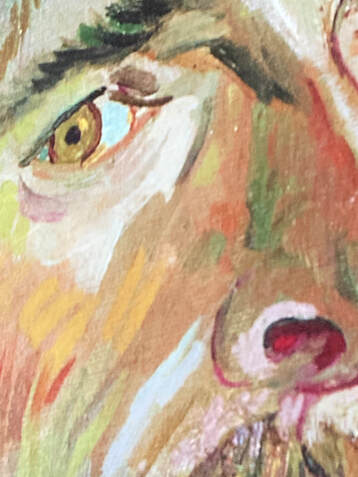
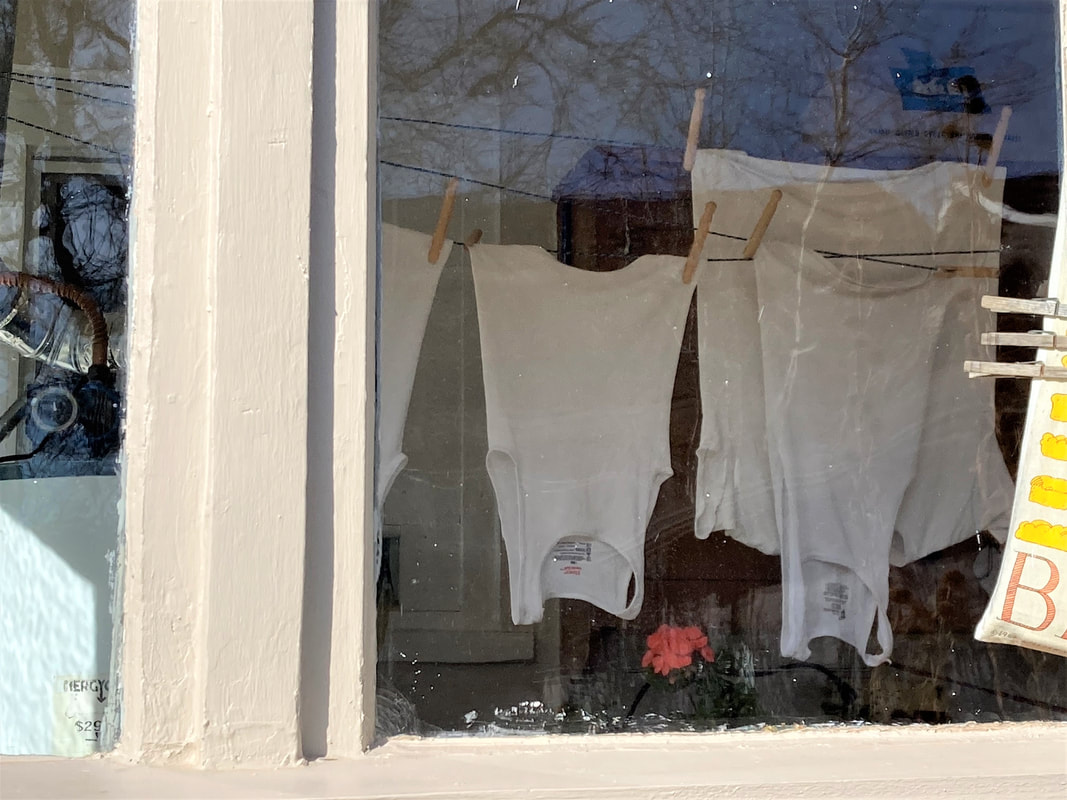
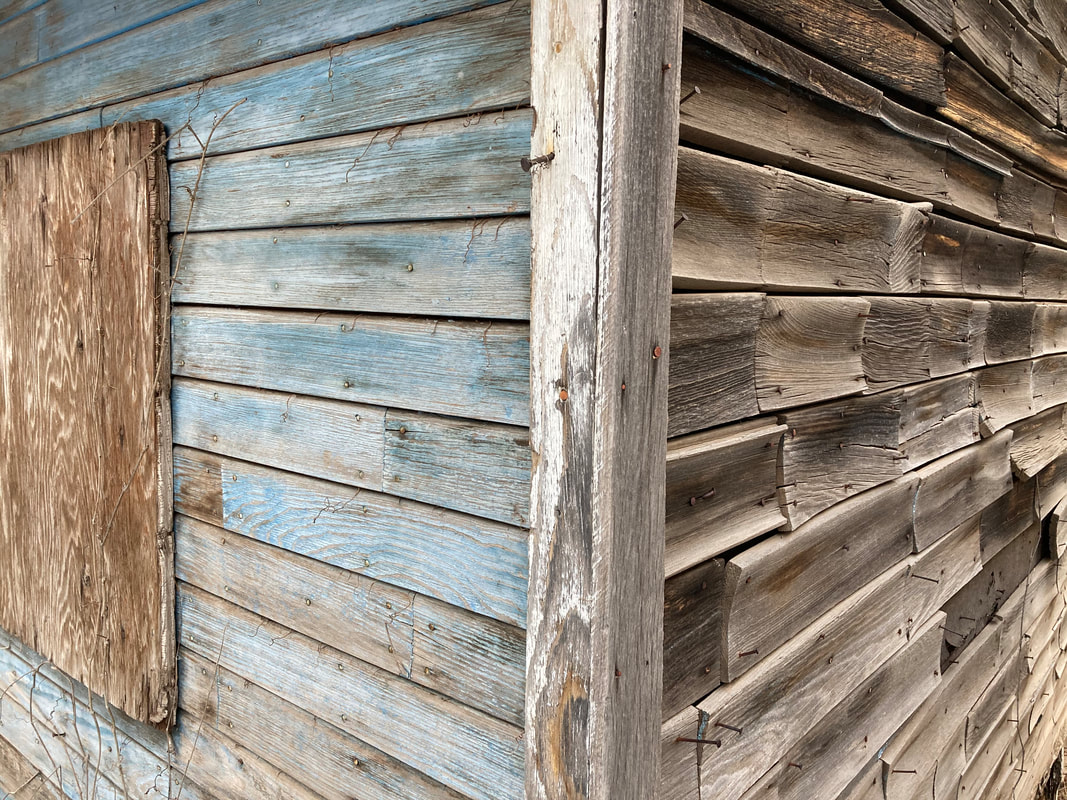
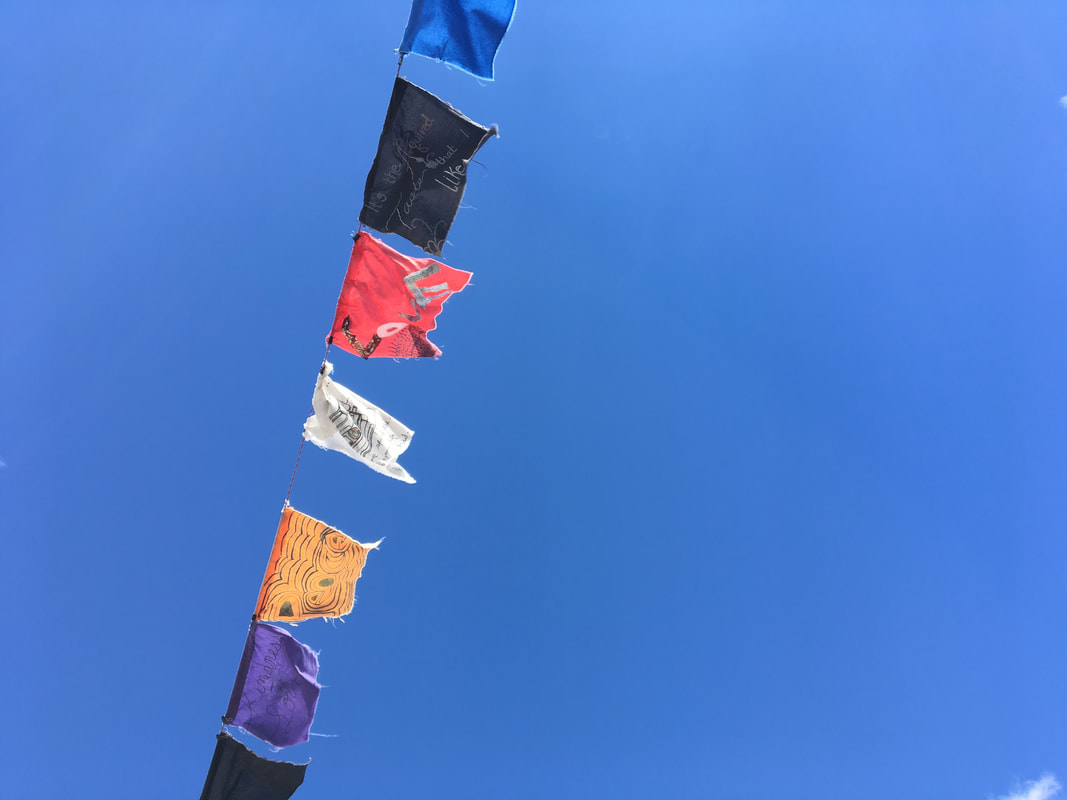
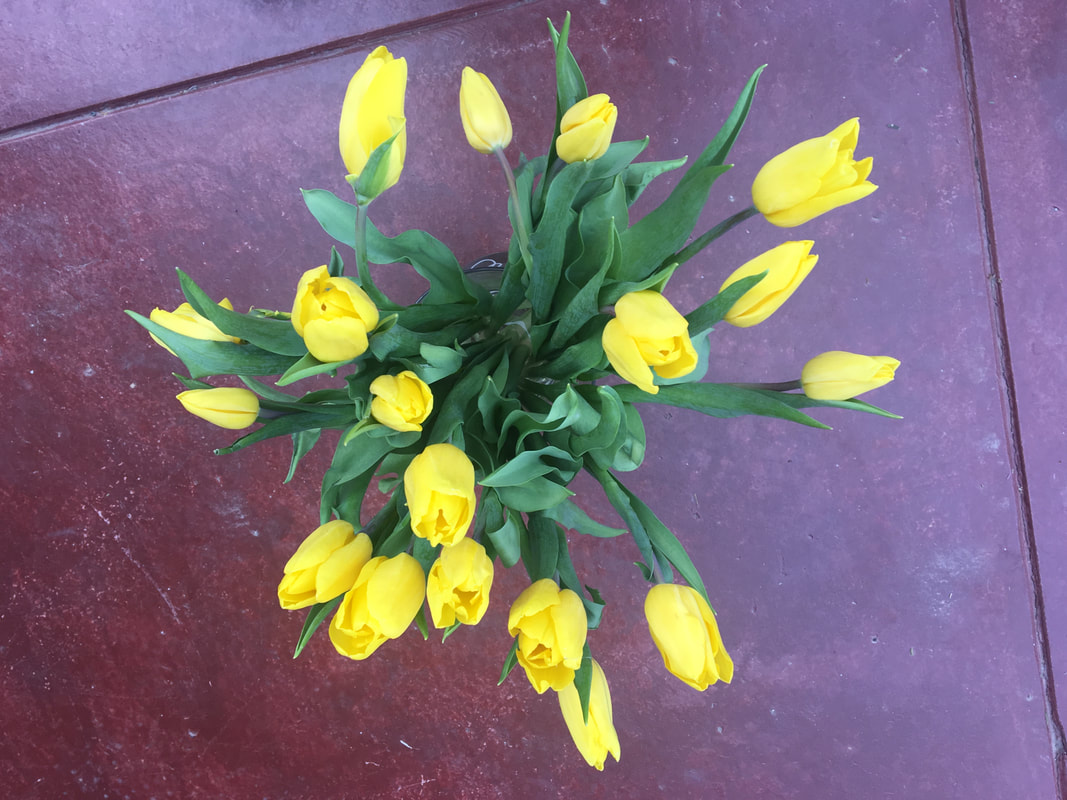

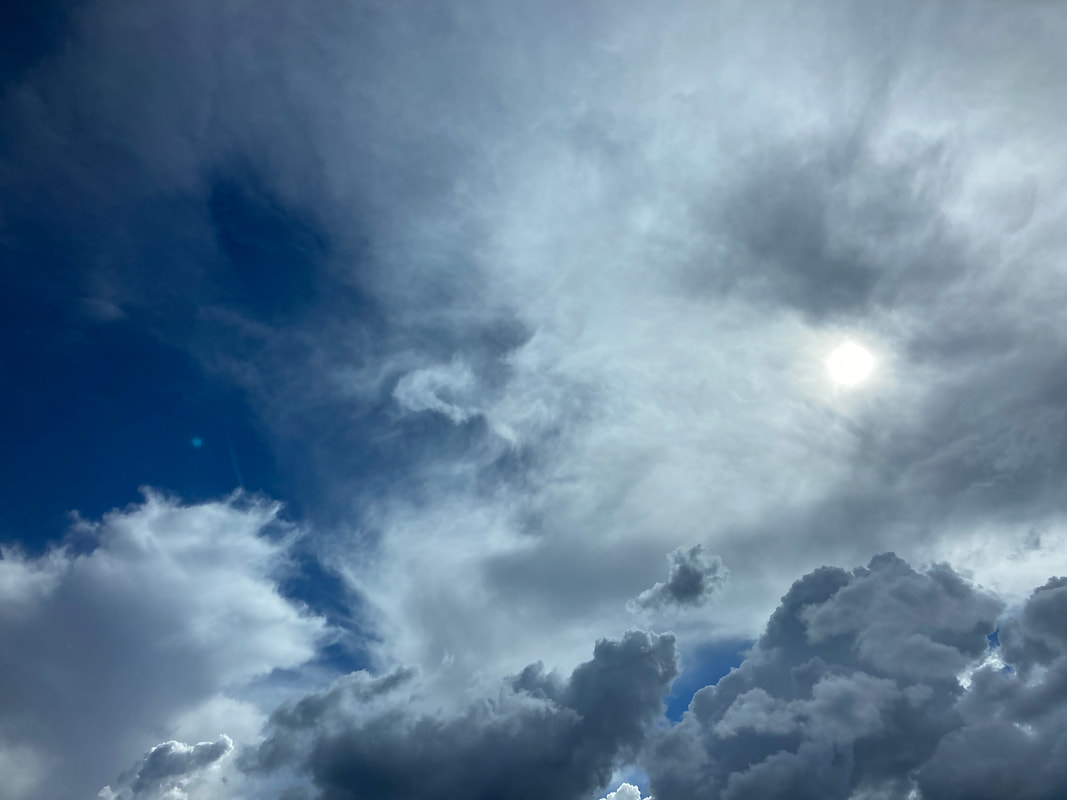
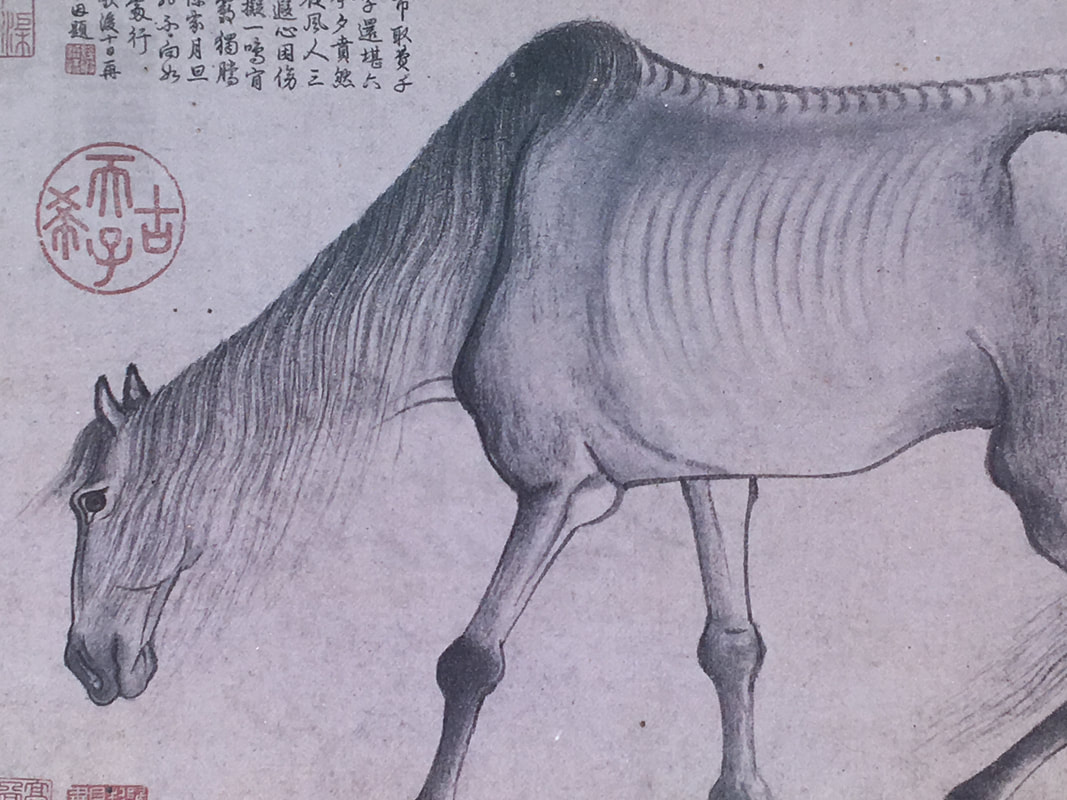

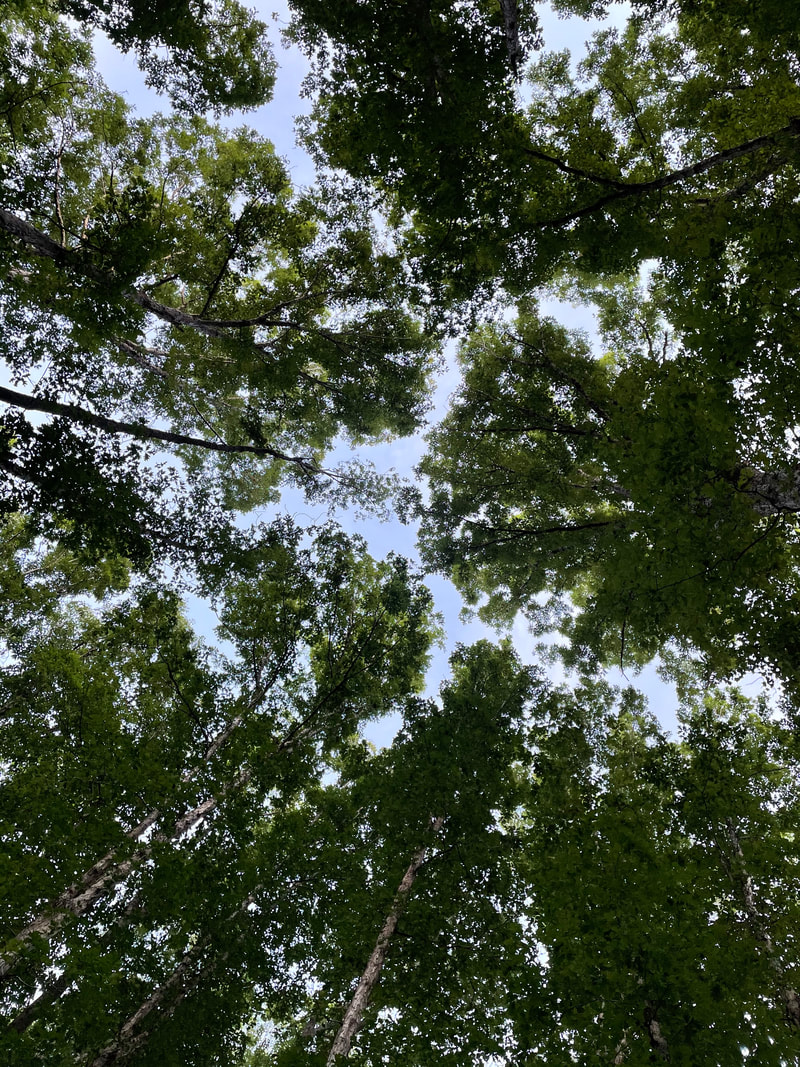
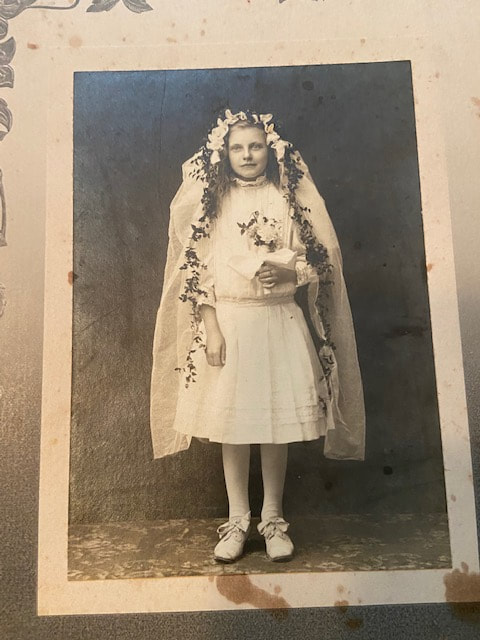
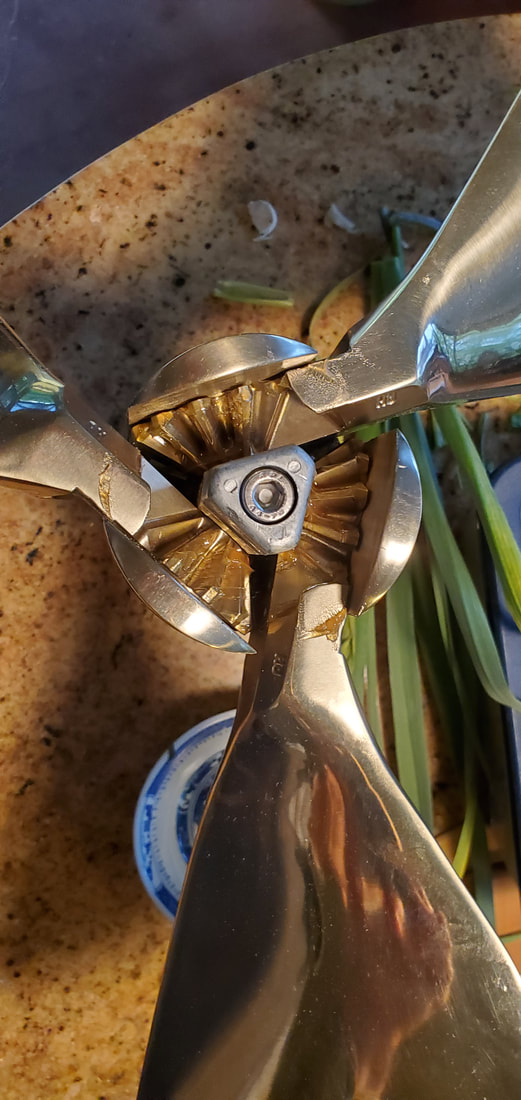
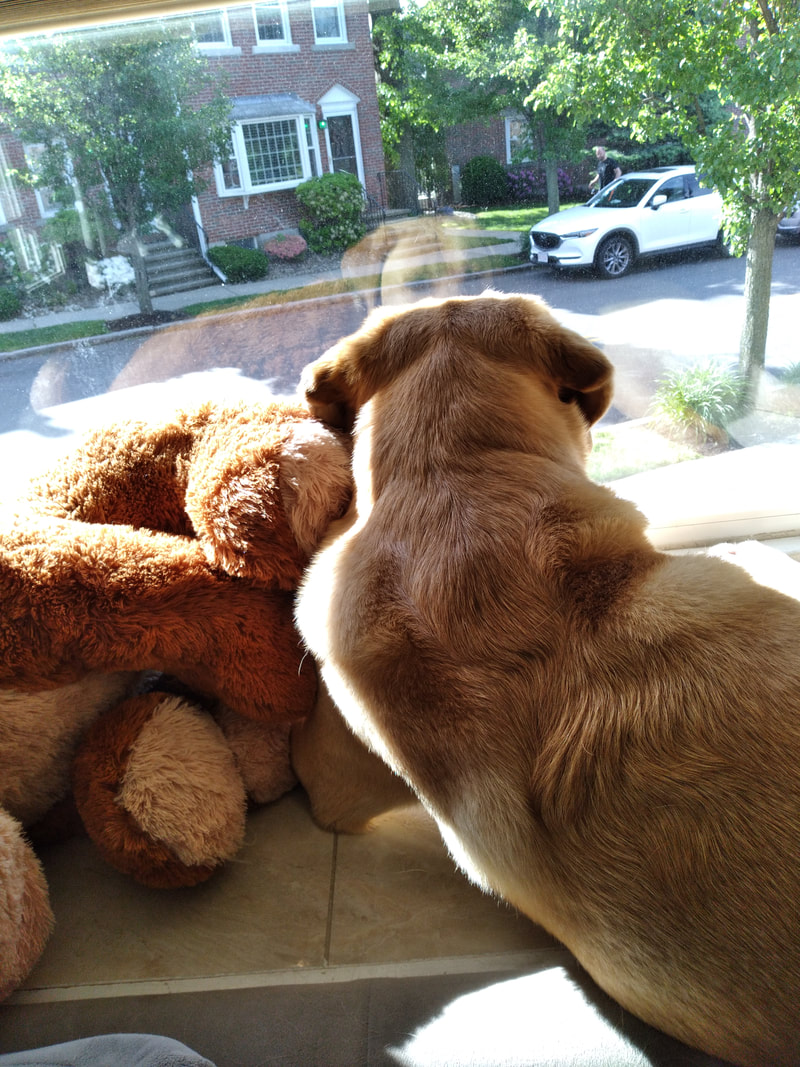
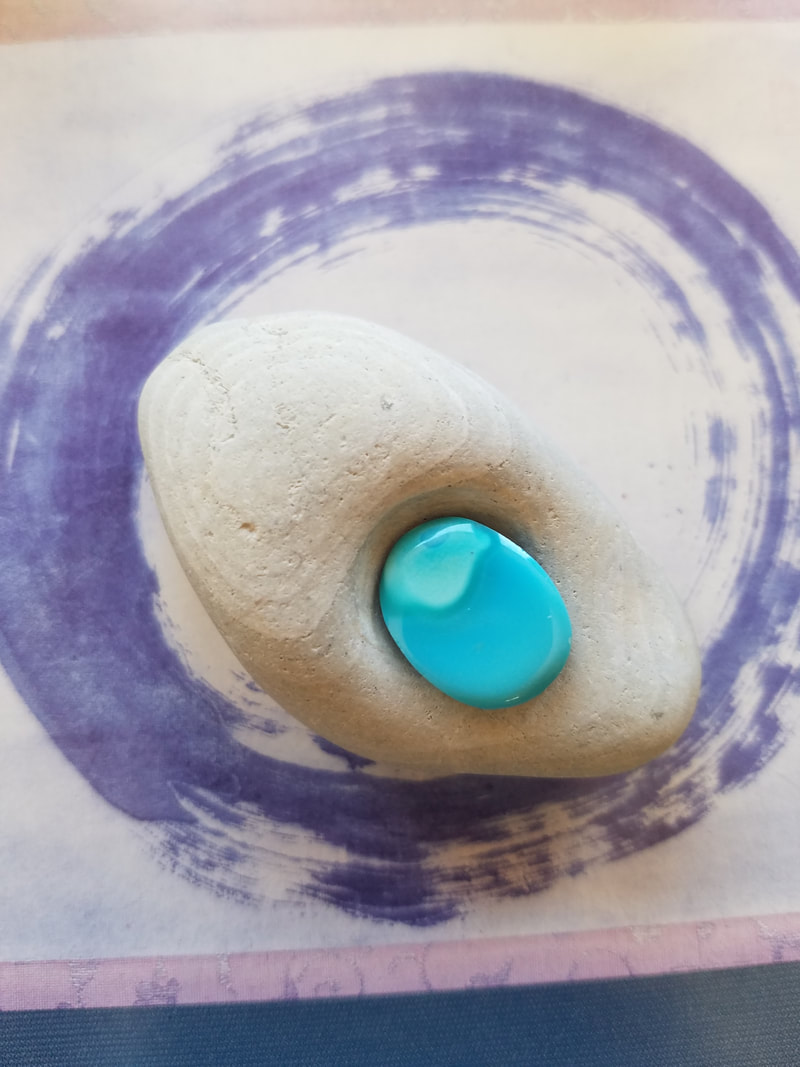
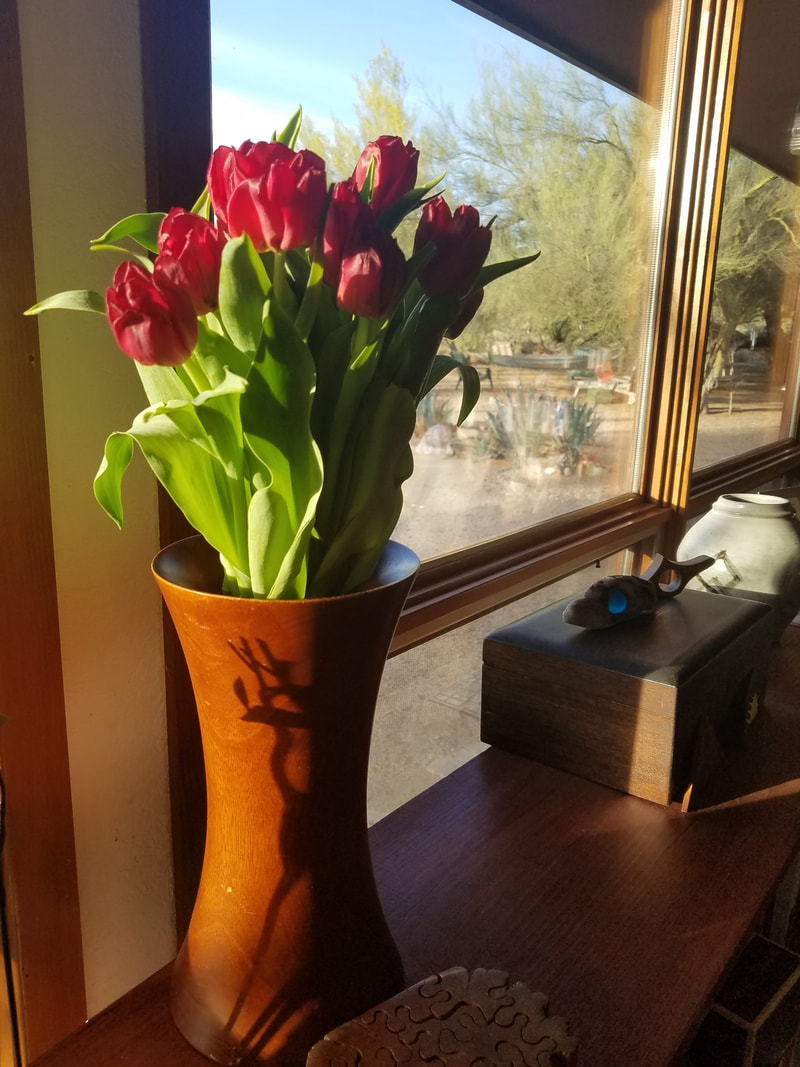
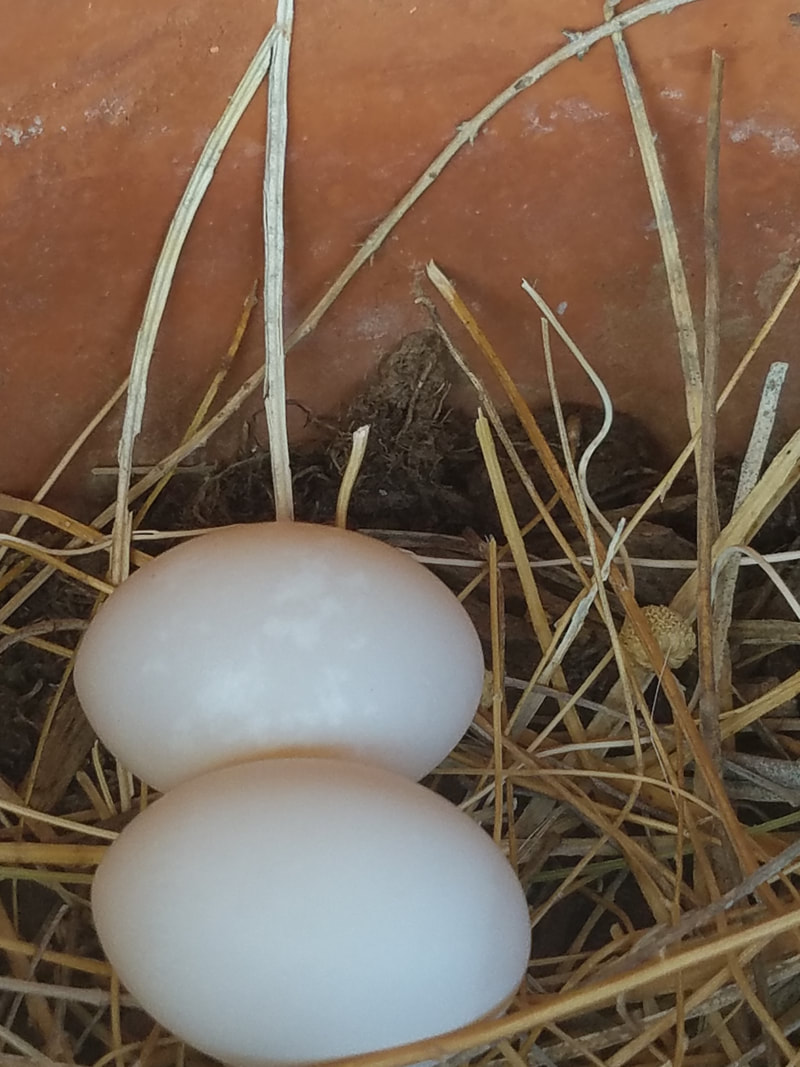
 RSS Feed
RSS Feed